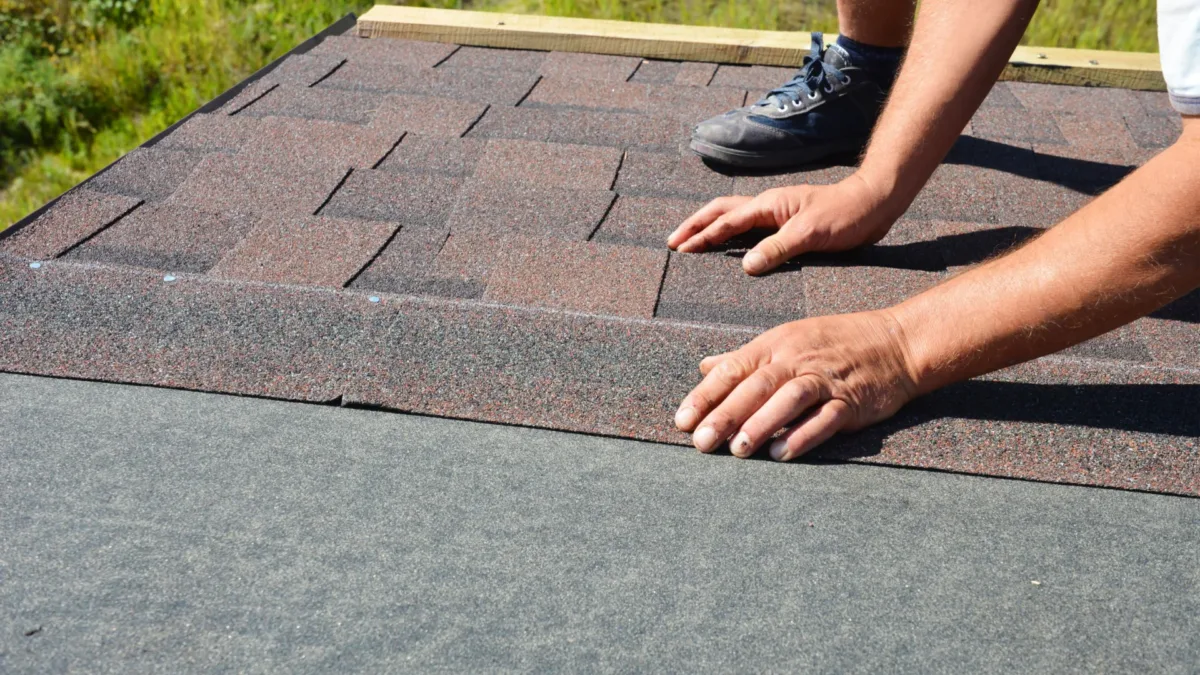In This Article
If you’re looking for a new shingle roof, you’ve probably heard people talk about dimensional shingles. But for many homeowners, it can be hard to get a clear understanding of what this roofing material is and how it differs from other shingle roof options.
That’s what we’re here for. We’re Classic Roofing , and we’re your local experts on all things to do with shingle roofing. Keep reading and we’ll use our 20 years of local roofing experience to tell you everything you need to know about dimensional shingles.
Dimensional Shingles Defined

Dimensional shingles (also called laminate or architectural shingles) are a type of asphalt roofing shingle. This means that the base of the shingle is made from fiberglass. This base is then laminated with asphalt to improve its durability. As a final step, protective granules are coated onto the shingle to give it improved resistance to impact damage.
In this way, dimensional shingles are similar to any other asphalt shingle option. But there are some important distinctions that set it aside from other shingle roofing materials.
For one thing, dimensional shingles are much thicker than cheaper three-tab shingles. This comes from having a fiberglass base that is both thicker and heavier than what manufacturers use for three-tab shingles. And this extra weight comes with improved durability, especially in Florida where the biggest threat to your shingle roof is hurricane-force winds.
Dimensional shingles are also a great option if you’re looking for strong aesthetics from your new shingle roof. In fact, their name comes from their ability to create dimension on your roof. They achieve this by having a distinctive coloring pattern that, when correctly installed, creates dimensional and visual interest on your roof.
The History of Dimensional Shingles
Today, dimensional shingles are some of the most popular roofing materials available in North America. But how did these asphalt shingles become so popular?
It all started in the 1970s when dimensional shingles first entered the market. Manufacturers presented them as a hardier, more durable alternative to three-tab shingles. With enhanced durability and fantastic aesthetics, dimensional shingles were seen as a higher-quality shingle that was more comparable with cedar shake or slate.
All of these improvements also meant that dimensional shingles came with significantly improved warranties. As a result, it didn’t take long for homeowners to fall in love with these shingles. That’s led us to our current climate now, where dimensional shingles are the ideal blend of performance and affordability.
Dimensional Shingle Performance, Durability, and Cost

Now that we’ve covered what separates dimensional shingles from other roofing materials of the same type, let’s talk hard numbers and what you can expect from your new roof.
Some of the key features of architectural shingles include:
- Fire Resistance: Most dimensional shingles on the market have a Class A fire rating. This means that they are extremely flame-resistant and are unlikely to catch fire even in the worst circumstances.
- Wind Rating: The wind rating for your shingles will depend on the brand that you buy. But generally, dimensional shingles come rated for winds up to 140 mph. For context, that’s the wind speed of a Category 4 hurricane!
- Longevity: Cheaper three-tab shingles tend to last for around 15 years. Dimensional shingles, on the other hand, can last for up to 25 years before they need replacing. This makes them a great, cost-effective option for homeowners who want longevity without a top-of-the-line price.
- Aesthetic Options: Dimensional shingles come in a wide variety of colors, which allows homeowners to customize their roofs to their exact vision for their homes.
- Warp Resistance: In Florida, shingles are often baked by the sun and begin to crack and curl in the later years of their life. This is much less likely with a dimensional shingle, however, since their thicker composition prevents warping.
Of course, there’s one crucial piece of information missing here. How much do dimensional shingles cost?
Architectural Shingle Costs
Calculating the costs of a new shingle roof comes with a lot of hurdles. For one thing, the price will depend on the manufacturer of your dimensional shingle of choice. For example, Owens Corning dimensional shingles may not cost the same as dimensional shingles from GAF.
More than that, though, the cost of your roof can depend on the size and slope of your roof, how accessible your roof is, and what unique features your roof has (like chimneys or dormer windows). And that’s all before you get into calculating the labor costs.
So while we can’t tell you exactly how much your new dimensional shingle roof will cost, we can tell you the material costs for architectural shingles. And those can fluctuate with the market, but they tend to fall between four and six dollars per square foot. So for a 1,000 square-foot roof, you can expect to pay $4,000 to $6,000 on material costs alone. From there, how much your roof costs will largely come down to who installs your roof.
Picking the Best Shingle Roof Installers in Florida
Classic Roofing has been installing shingle roofs in Florida since 2003. Since then, we’ve become an essential part of the roofing landscape in Florida. And it’s not by luck that we’ve lasted this long—it’s by consistently doing right by our customers.
We have hundreds of reviews that attest to the professionalism of our crew and the quality of their workmanship. That means that when you pick Classic, you can be 100% certain that your roofers know how to properly install a dimensional shingle roof. Because at Classic, we don’t cause more problems for our customers, we just fix them.
If you’re interested to see the difference that Classic Roofing can make, schedule your free roofing estimate. There’s no cost and no obligation to choose us—it’s just a chance for us to show you how we can help and earn your business. Our estimates are comprehensive, clear, and directly explain exactly what you’re paying for. So why not give us a try and see why Florida has been using Classic for more than 20 years?





